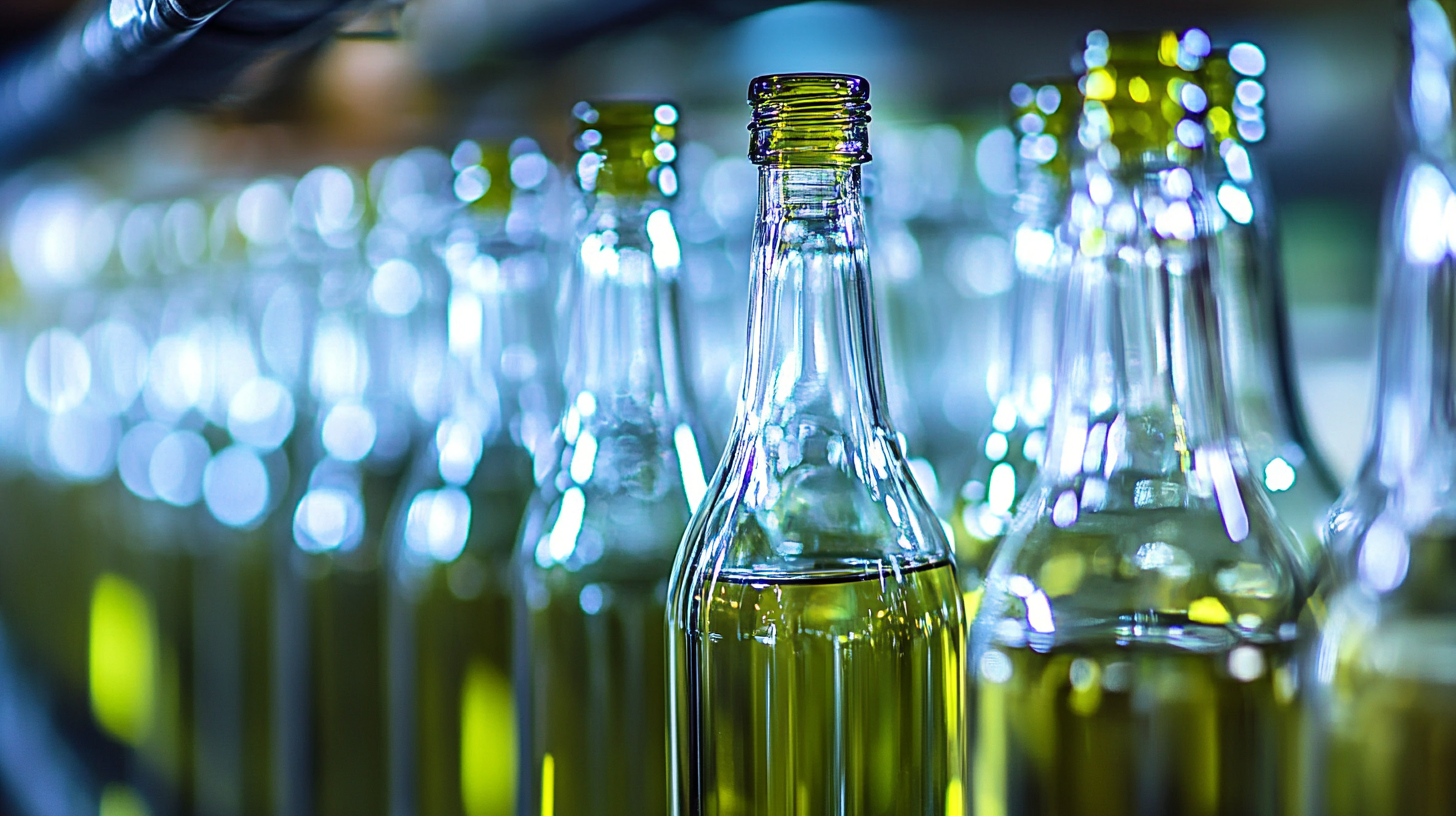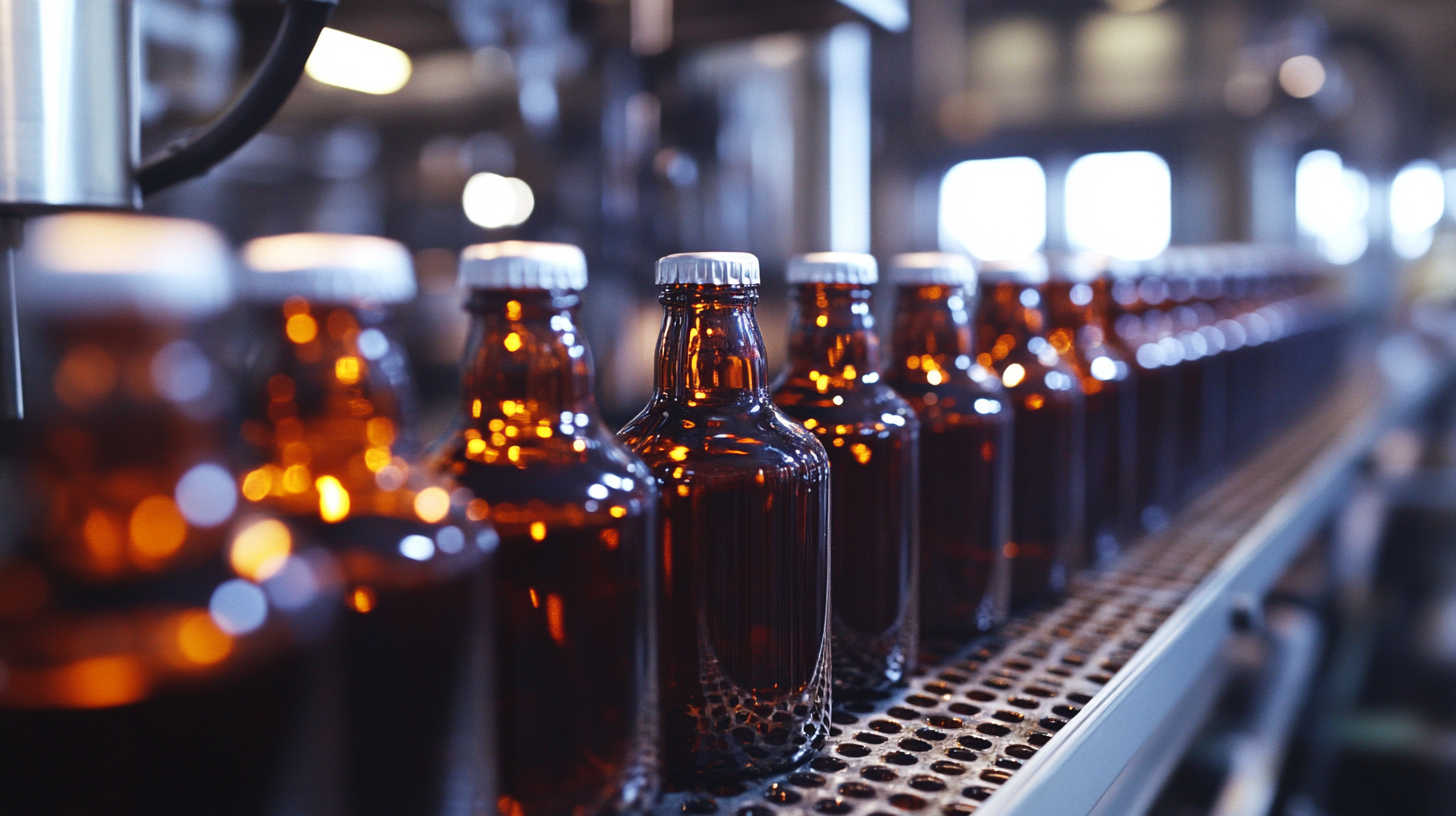Unlocking Efficiency: The Advantages of Premium Bottles and Packaging for Global Sourcing
As global sourcing continues to evolve, the significance of high-quality bottles and packaging has become increasingly evident. According to recent studies, businesses that invest in premium packaging experience a 30% increase in customer satisfaction and retention, ultimately driving sales and brand loyalty. With the bottled beverage industry projected to reach $307 billion by 2024, discerning suppliers who prioritize quality is essential for competitive advantage. Effective sourcing strategies not only ensure durability and aesthetic appeal but also align with sustainability goals, as 60% of consumers are more likely to purchase products with eco-friendly packaging. This blog will provide a comprehensive checklist for identifying premium suppliers in the bottles and packaging sector, helping businesses unlock efficiency and enhance their market position.

Exploring the Role of Premium Bottles in Sustainable Global Sourcing
In the realm of global sourcing, premium bottles and packaging play a crucial role in promoting sustainability. Today's consumers are increasingly conscientious about the environmental impact of their choices, and brands that prioritize eco-friendly packaging can gain a significant competitive edge. Premium bottles, often crafted from sustainable materials, not only enhance product appeal but also contribute to resource conservation. By utilizing materials that are recyclable or biodegradable, companies can reduce their carbon footprint and support a circular economy.
Moreover, the design and functionality of premium bottles can greatly influence consumer behavior. Attractive and innovative packaging encourages consumers to opt for products that align with their values, particularly regarding sustainability. Features like refillable or reusable designs further emphasize a product’s commitment to reducing waste. As businesses align their sourcing strategies with environmental considerations, they not only address consumer demands but also foster a brand image steeped in responsibility. Ultimately, integrating premium packaging into global sourcing strategies is a powerful way for brands to demonstrate their dedication to sustainability while driving efficiency and appeal.
The Impact of High-Quality Packaging on Brand Perception and Consumer Trust
High-quality packaging plays a pivotal role in shaping brand perception and building consumer trust in today’s competitive marketplace. Research indicates that 72% of consumers believe packaging design influences their purchasing decision. In an era where first impressions matter more than ever, premium bottles and packaging serve as key differentiators. Brands that invest in quality materials and innovative designs not only enhance the visual appeal of their products but also convey a message of authenticity and value, fostering deeper connections with their customers.
Moreover, the impact of packaging extends beyond aesthetics. A recent study published by Smithers Pira reveals that 61% of consumers are willing to pay more for products that come in high-quality packaging. This willingness is tied to the perception of safety and integrity; consumers often associate premium packaging with superior product quality. As such, brands that prioritize the use of durable and visually appealing materials can significantly boost consumer confidence, leading to increased loyalty and repeat purchases. By understanding the critical role of packaging, businesses can strategically position themselves to meet the evolving expectations of their target audience.

Cost-Benefit Analysis: Investing in Premium Bottles for Long-Term Efficiency
When considering global sourcing, the choice of packaging can significantly impact long-term efficiency and cost savings. Investing in premium bottles offers several advantages that go beyond mere aesthetics. High-quality materials enhance the protection of the product during transportation and storage, reducing the risk of damage. This translates to fewer product returns and replacements, ultimately lowering operational costs. Moreover, premium bottles are often designed for better sealing and preservation, which can extend the shelf life of products, further driving savings in wastage and spoilage.
A thorough cost-benefit analysis reveals that while the initial investment in premium packaging may be higher, the long-term financial benefits can outweigh these costs. Companies can realize significant savings through reduced liability for damaged goods, enhanced customer satisfaction due to superior quality, and the potential for higher sales prices driven by a reputable brand image. Additionally, premium packaging can facilitate more effective logistics and supply chain management, streamlining processes and minimizing delays. Therefore, companies that prioritize investment in quality packaging can achieve a competitive edge in the global marketplace, making it a strategic decision rather than just a financial one.
Unlocking Efficiency: The Cost-Benefit Analysis of Premium Bottles
This chart illustrates the cost components associated with premium bottle sourcing compared to the recycling benefits. Investing in quality can lead to long-term efficiency gains, highlighted by the recycling benefit that offsets some production costs.
Navigating the Challenges of Sourcing Premium Packaging from China
In today’s global marketplace, navigating the complexities of sourcing premium packaging, particularly from China, has become increasingly crucial for brands aiming to maintain competitiveness. The beauty and luxury sectors, in particular, are feeling the heat from new US tariffs which threaten to upend longstanding supply chains. Trade experts suggest that brands must quickly adapt their sourcing strategies to mitigate disruptions, with many adopting "Trump Majeure" clauses to protect their investments.
Recent industry reports indicate that China's luxury goods market has experienced significant challenges, characterized by a decline in domestic spending and fluctuating consumer confidence levels. As brands contemplate their packaging choices, they must consider how premium bottles and materials not only enhance product allure but also align with the growing consumer demand for sustainability. In fact, research shows that 75% of consumers are more likely to purchase products with environmentally friendly packaging. Incorporating sustainable practices in sourcing and packaging can thus enhance brand reputation while navigating these turbulent waters.
Additionally, as the coronavirus pandemic reshapes consumer expectations, packaging companies are urged to adopt innovative strategies to stay ahead. Embracing advancements in sustainable packaging will not only meet market demands but will also contribute to a circular economy, which is increasingly vital in the eyes of environmentally conscious consumers worldwide.
Innovative Technologies in Bottle Design: Enhancing Functionality and Aesthetics
Innovative technologies in bottle design have paved the way for an array of functionalities and aesthetic enhancements that cater to the evolving demand in the global market. According to a report by Smithers Pira, the global packaging market is projected to reach $500 billion by 2025, driven significantly by innovations in premium bottle design. Companies are increasingly focusing on ergonomic shapes, lightweight materials, and eco-friendly options to attract environmentally conscious consumers. For example, advancements in blow-molding technology allow manufacturers to create intricate designs without sacrificing durability, thus enhancing both the visual appeal and usability of the bottles.

Tips for brands looking to leverage these innovations include investing in smart packaging features that improve user interaction, such as QR codes for product information or augmented reality experiences. Additionally, utilizing sustainable materials in packaging not only aligns with consumer preferences but can also reduce production costs, as reported by the Sustainable Packaging Association. By adopting such practices, brands can not only enhance their product offerings but also foster customer loyalty through a commitment to sustainability.
Furthermore, attention to aesthetic trends—such as minimalist designs and vibrant colors—can significantly influence consumer purchasing decisions. Research from Nielsen indicates that 64% of consumers choose products based on packaging aesthetics. Thus, combining innovative design with a keen understanding of market trends can help brands stand out in a crowded marketplace and drive sales effectively.
CONTACT US
|
